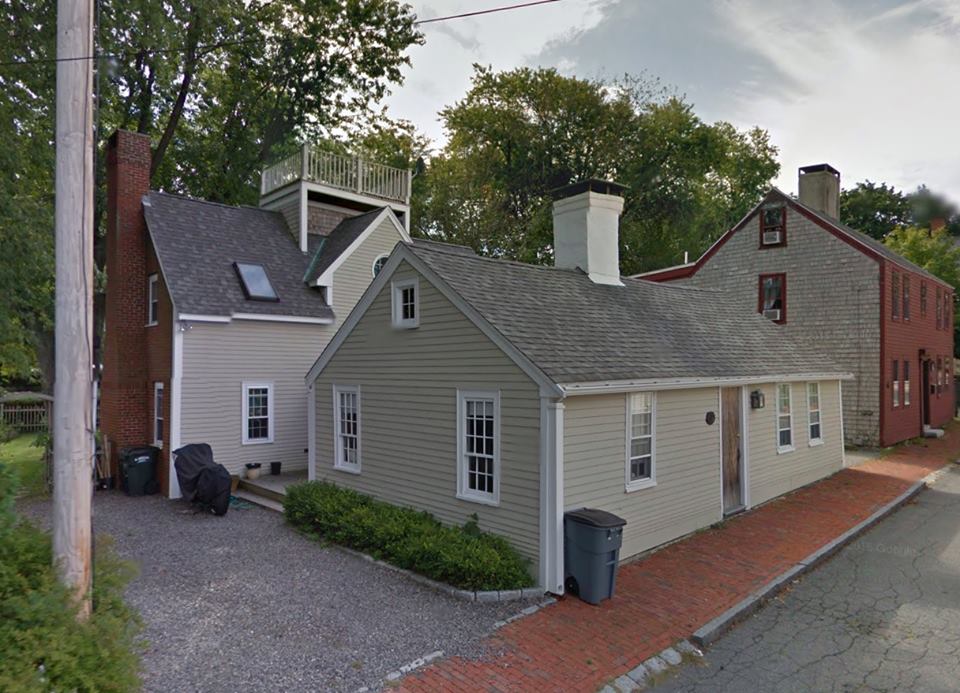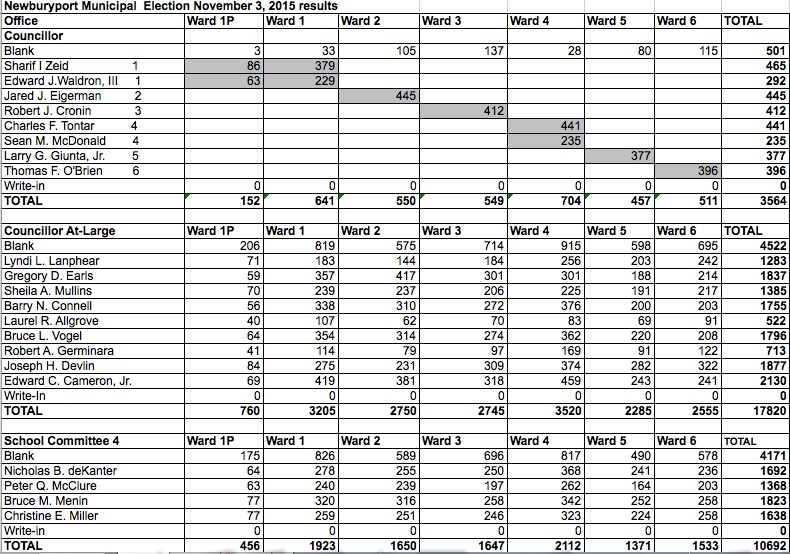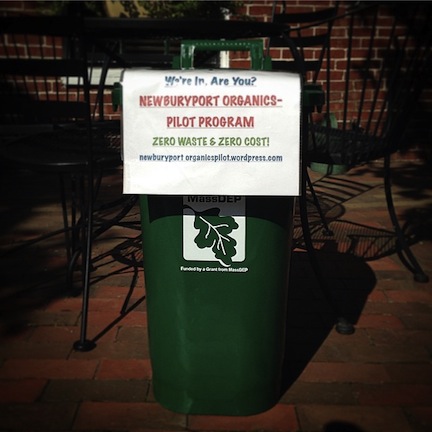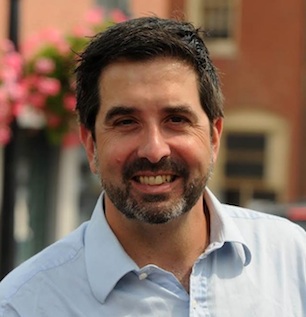Chris Kolmar first crossed my radar when the website he owns wrote a not so complimentary “info-entertainment” snippet about the city I love so much, Newburyport, Massachusetts.

1) This is not Mr. Kolmar’s first rodeo.
This is not Christopher Kolmar’s first rodeo, his words, not mine. Chris Kolmar appears to be a boy genius when it comes to viral, content marketing. He has written several terrific articles and got the blog, that the company the he worked (still works??) for, to become a household name. I actually took some of his suggestions and used them in the previous post. This guy is a smart cookie, no doubt about it. I was wicked impressed by his previous work. His latest websites — not so much.
2) Chris Kolmar is young.
He graduated from college in 2009. So maybe at this writing he is 27 or 28.
3) In my opinion, his new website(s) demonstrate an uninformed, graceless immaturity.
Mr Kolmar seems to be using his terrific talent, in my mind for money, notoriety and lots of traffic to his various websites (i.e. money, fame and money).
The little info-entertainment snippet on my beloved hometown contained a tweet (as part of the website’s “data”) from a “kid,” probably a very nice kid, who listed their hometown as Amherst, MA (which btw is not Newburyport – an expert? one wonders…data??).

“Thorn in my side”, on Flickr, Broo_am (Andy B), Creative Commons License
“Thorn in my side”, on Flickr, Broo_am (Andy B), Creative Commons License
4) Mr. Kolmar’s website gets its data wrong.
The list is very long of people pointing out all the mistakes in the data on Chris Kolmar’s websites (I refuse to give the name or link to the websites, because that is exactly what Mr. Kolmar would like — it’s clicks, clicks, clicks — links, links, links). So Mr. Kolmar’s often, in my mind, cruel observations, seem to be based on data that is at times inaccurate.
5) Chris Kolmar has hurt a lot of communities and the people that live them.
Wow, the list of people and communities (especially communities that are struggling) that, in my opinion, he has hurt with his cruel and graceless immaturity is lengthy. If he ever enters a 12 step program, which in my mind could not be soon enough, the list of amends he would need to make would be in the 100,000s (really).
6) Christopher Kolmar is hurting small businesses.
Yup, the small business in Newburyport that he portrayed in his info-image from Google Maps, a small business that has been loved by our community for decades, was depicted in the most unflattering way (and it’s a great looking place). And apparently I am not alone in this opinion — that Mr. Kolmar finds the worst images and angles for the places that he writes about — again, cruel, cynical and thoughtless stuff.

7) Mr. Kolmar will probably succeed in this new endeavor like crazy.
And Christopher Kolmar will probably succeed in this recent (started in May 2015) endeavor, because, I believe he is playing on people’s basest emotions in a slick, sloppy, cynical way. As almost every “news” organization knows, kind, thoughtful stuff doesn’t get readership or viewership like a really good catastrophe, or when someone says something really cruel and mean.
(I would say that Chris Kolmar is the polar opposite of the three young men that give me hope for the future of Newburyport, Massachusetts.)
8) Contact Christopher Kolmar and his partner Nikolaos (Nick) Johnson
You can send them an email, people probably won’t, but this is the email addresses that I used, plus an old one for Chris Kolmar that I found:
Chris@HomeSnacks.net, Nick@HomeSnacks.net, info@HomeSnacks.net, christopher.kolmar@gmail.com (email from 2012)
And there is always snail mail.
This is the information that I have on the company:
Our goal is to show you the real side of places that not everyone wants to hear. We use data to create bite-sized snacks of shareable information about places and cities across the country. We call it the ‘other’ side of regional infotainment.
Chasing Chains, L.L.C.
210 Strolling Way
Durham, North Carolina 27707
9) People who have stood up to Christopher Kolmar and his partner Nikolaos (Nick) Johnson (yes, “standing up to” implies standing up to bullies). And these are just some of the many people who have done this — it is a long, long list.
A) Dr. Andrew J. Pegoda, Texas, “An Open Letter to Chris Kolmar and Nick Johnson of RoadSnacks: Please Remember People Have Feelings”
“Additionally, your list, likely not intentionally but the effect is the same nonetheless, embodies and perpetuates racism. It could cause business to avoid areas where such business could really be needed in terms of jobs and services provided. “
B) Molly McWilliams Wilkins, Georgia, “In Defense of Small Towns”
“But you need to consider the soul, and heart, of the places you write about. And realize that there are some who not only choose to live in them, but cherish their hometowns.”
C) Mike Parker, North Carolina, ” ‘RoadSnacks’ blast gives me indigestion”
“My dad once told me: ‘Son, figures don’t lie, but liars can figure.’ “
D) Aaron Brown, Minnesota, “Warm greetings from Minnesota’s northern hellscape”
“Before you fall over yourselves rushing to see the site, know that it’s click bait. Believe it or not, RoadSnacks.net is not a repository of our century’s finest thinking, but a website that profits when people look at their ads. It lacks the dignity of a site like this one, which has the class and intellectual merit to attract far fewer readers while making almost no profits whatsoever.”
E) Barry Saunders, North Carolina, “Rockingham deserves better from RoadSnacks”
“…it’s easier to pick on struggling municipalities in which you’ve probably never et a Vienna sausage than to look into what’s causing the problems you so erroneously and cavalierly catalogue – for infotainment.”
F) Brian Blueskye, California, “In Defense of DHS: An ‘Analysis’ Recently Declared That Desert Hot Springs Is the Worst Place to Live in California. Here’s Why We Disagree.”
” ‘The two people who run that website, they do one of those lists on every state,” Betts said. “They’re click-whores. They’re just doing that to build traffic. How can they possibly analyze all 50 states?’ “
G) North Carolina, “OUR VIEW: Defy, don’t just deny, county’s ‘worst’ labels”
“That’s what’s really important, after all. Proving provocateurs like RoadSnacks dead wrong is just the icing on the cake.
Forget denial, Richmond County. This is a challenge that calls for defiance.”
H) Mark Saal, Utah, “Ogden second worst? That couldn’t be worse”
“— henceforth and forever I wasn’t going to report the source of these vacuous helpings of intellectual cotton candy. Mostly because the companies that compile these lists are what we in the business affectionately refer to as “publicity whores.”
“…an attempt to attract as much media attention as possible.”
“And finally, as authoritative as I’d love to consider RoadSnacks (D’oh! Mentioned it again), it’s important to note that the “company” — possibly just some 20-something with a computer, living in his parents’ basement — is headquartered out of Durham, North Carolina. North Carolina, people.”
I) Mark Muckenfuss, California, Who asks the question, “Does Nick Johnson want to become the most hated man in America?”
“What’s wrong with Nick Johnson? Does he really want to become the most hated man in America?”
“Johnson has made it his job to tell people they live in terrible places…”
” ‘I’ve had some really sappy letters sent to me that made me feel sad about doing this and we almost stopped. They said ‘You hurt everyone’s feelings,’ and we said, ‘Maybe we shouldn’t do this.’ ” “…But then he (Nick Johnson) looks at the traffic on the website.”
J) Steve Urbon, Massachusetts, “Worst? Buddy, you don’t know the meaning of worst — Mayor Jon Mitchell took the printout I had handed him, made a face and held it up like a soiled diaper”
“Some crackpot website in Durham, North Carolina, had messed around with some statistics…”
“You would think that if you’re going to publish something online that serves as cheap “linkbait,” you could at least get the numbers right.”
K) Tasnim Shamma, Georgia, Faulty Data Is Behind Georgia City’s Most Dangerous Ranking
This article quotes the FBI which urges people not to use their data. However, Christopher Kolmar and Nick Johnson do use this FBI data in compiling some of their lists. The FBI warns against using the data, and this is what the FBI has to say:
“UCR (Uniform Crime Reporting) data are sometimes used to compile rankings of individual jurisdictions and institutions of higher learning. These incomplete analyses have often created misleading perceptions which adversely affect geographic entities and their residents. Despite repeated warnings against these practices, some data users continue to challenge and misunderstand this position.”
“When providing/using agency oriented statistics, the FBI cautions and, in fact, strongly discourages data users against using rankings to evaluate locales or the effectiveness of their law enforcement agencies.”
The article quotes Robert Friedmann, the director of the Georgia International Law Enforcement Exchange at Georgia State.
“…the rankings are irresponsible clickbait. It makes people panic and can affect a city’s local economy if it prevents people from moving there.”
This is an article from Jacob Harris, who predicted this way back in 2014. Jacob Harris is a senior software architect at The New York Times and this article is from the Nieman Journalism Lab, part of the Nieman Foundation at Harvard University.
“Nobody can say exactly when the trend first started, but in 2014 we saw the first major outbreaks of bogus data distributed by private companies just so it would go viral online.”
“To be blunt, all of these stories were unredeemably awful, riddled with errors and faulty assumptions. But accuracy wasn’t the point. All of these examples of “data journalism” were generated by companies looking for coverage from online news organizations. The goal is a viral feedback loop, where the story is reaggregated by others, the site surges in its organic search rankings, and the study is tweeted for days even by haters like myself. For these purposes, they were perfectly designed to exploit the nature of modern news distribution online.”







































